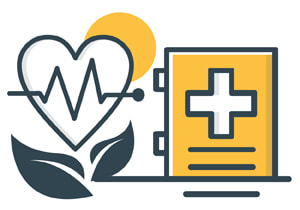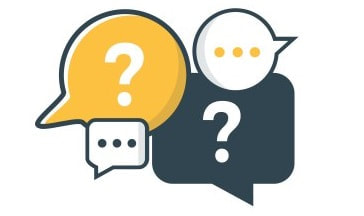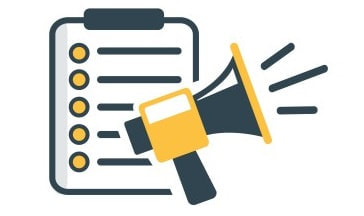Disability Allowance Guide
Claim up to $3,000 for doctor and specialist costs, pharmacy prescriptions and other medical and related costs with a Disability Allowance - our guide explains everything you need to know
Updated 31 August 2020
Summary: What is the Disability Allowance?
In this guide we explain everything you need to know about qualifying for the disability allowance, costs you can include, what you'll need to prove to get paid the entitlement and must-know tips. We cover:
- The Disability Allowance is a type of extra help available from Work and Income to help with the ongoing extra costs associated with having a disability.
- The maximum payment is currently $65.36 per week, but this guide explains how your specific entitlement is calculated.
- You can receive a Disability Allowance when you are receiving a main benefit, or even if you are working (subject to an income test).
- The critical thing to keep in mind about a Disability Allowance is that it's not designed to provide health care or replace your GP. Instead, it is intended to help with the extra costs you may have in accessing health care.
In this guide we explain everything you need to know about qualifying for the disability allowance, costs you can include, what you'll need to prove to get paid the entitlement and must-know tips. We cover:
How does does the Disability Allowance work?
The Disability Allowance is available to anyone who qualifies. In this section, we outline everything you need to know with regards to payments:
1. Understand how to qualify
Aside from the usual residency, ID and income requirements, the key qualifications for a Disability Allowance are:
How does Work and Income determine whether my health condition qualifies?
- That you have health condition likely to last more than six months
- That you have regular and ongoing costs because of that health condition.
How does Work and Income determine whether my health condition qualifies?
- To confirm that you have a health condition that meets the qualifications, Work and Income will ask you to have your doctor complete a Disability Certificate form. This form will specify the condition(s) you have, and the extra costs that may arise from these conditions.
- Sometimes Work and Income will need to get more information from your doctor. For example, if they have only given Asthma as your health condition but then recommended costs associated with counselling be included. In such a case Work and Income will need to understand how the two are related. If Work and Income want to talk to your doctor, they'll ask for your permission first.
2. Understand what costs you can include
The costs that can be included in your application are wide-ranging. Some common ones include:
Please note, this isn't an exhaustive list - please visit Work and Income's dedicated guide for the latest list of what's covered. The guiding principle for Work and Income is that the cost:
Know this: Most people will qualify for something if they have a long-standing health issue, even if it is only doctors visits and prescription costs.
- Doctor's fees
- Prescription costs
- Ambulance fees and subscriptions
- Counselling
- Gardening, lawns and outside window cleaning
- Medical alarms
- Power, gas and heating
- Special foods
- Transport
Please note, this isn't an exhaustive list - please visit Work and Income's dedicated guide for the latest list of what's covered. The guiding principle for Work and Income is that the cost:
- Is related to your qualifying disability
- Has been confirmed by your doctor
- Is more than someone without a disability would pay
Know this: Most people will qualify for something if they have a long-standing health issue, even if it is only doctors visits and prescription costs.
3. Understand the application process
- If you are applying for a main benefit, the Disability Allowance application is usually included with the application form.
- Be aware - if you don't have all the medical supporting paperwork, it can slow down the processing of your entire application.
- Alternatively, it can be easier to wait until you have your main benefit up and running and then add Disability Allowance later. If you have any concerns, the best person to talk to is your case manager.
- You can also apply any time while you are receiving a benefit (and even if you not, as Disability is assessed completely independently).
Across all applications you'll need:
- The Disability Certificate form from your doctor
- Proof of the costs the doctor has included - proof usually means receipts for what you have spent in the last twelve months. If you regularly visit the same doctor and pharmacy, they can usually give you an annual summary of your costs which you can include with your application to verify how much you pay.
Important: You must talk to your doctor about what they put on the form - if they don't add a cost, then Work and Income can't include it. To make sure you receive what you're entitled to, it helps to make a list before your doctors appointment.
4. Understand how much you'll be paid under the Disability Allowance, and how you can renew your payments
- Once Work and Income have proof of all your costs, they'll calculate a weekly figure. This is generally done by taking the annual figure and dividing by 52, or using information from your doctor.
- For example, a $40 per doctors visit, four times a year gives an annual figure of $160, or $3 per week.
- This might not seem like much, but add in prescription costs and other fees, and it can be a worthwhile addition to your weekly income.
Annual Review
- Every twelve months you'll be asked to review your costs and get a new form signed by your doctor. This can help make sure you are getting the right amount of assistance - but also can be the cause of a lot of stress.
- The best option is to keep all your medical receipts in one place, so you are ready to go when the review comes around.
- If you have new costs during the year, you can add them right away. Again, you'll need proof of the costs and a form from your doctor.
Disability Allowance - Must Know Tips
- You can get a Disability Allowance for yourself and your children too - the same rules apply (but you apply on their behalf if they are under 18).
- There is a completely separate form of assistance call the "Child Disability Allowance". This is a flat-rate payment for children with severe disabilities who require extra care and attention. The threshold for this sort of assistance is high, but if you think you might quality have a chat with your doctor.
- The cost of counselling can be included in a Disability Allowance, but it's usually time-limited, and you need to prove that you have attended appointments. Generally, the maximum is 30 sessions (but this can be extended). Your GP and the Health service should be organising counselling if it's a major part of your health needs - that's what they are funded for.
- Watch out for medical alarm suppliers. In many cases they offer their services only to (strongly) encourage older people to sign up for a Disability Allowance at the maximum rate. If you do this, all the money going to the medical alarm supplier and you won't be able to get payments for your ongoing doctor and pharmacy costs. If you or a parent need a medical alarm, it pays to shop around.
- If your weekly costs are higher than the maximum rate, you should apply for Temporary Additional Support too. This is a form of Extra Help that wraps up all your costs and income and can pay a top-up for a short period of time.



